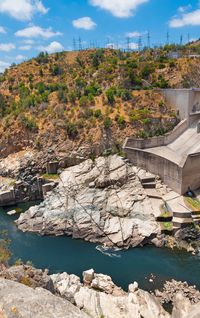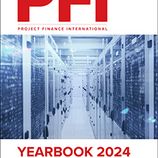The Inflation Reduction Act is reshaping the United States's energy investment landscape. This legislative package, which became law on August 16 2022, is a robust commitment to the deployment of technologies and infrastructure in support of green and low-carbon hydrogen adoption. It comes at a critical point in time, as stakeholders sector-wide strive to mitigate greenhouse gas emissions from hard-to-decarbonise sectors, such as heavy industry, agriculture, chemicals production, shipping and aviation. By Dan Feldman, partner, Fradyn Suarez, partner, Jessica Mendoza, counsel, and Pedro Claussen, visiting attorney, King & Spalding LLP.
Collectively, these sectors are responsible for more than 35% of global greenhouse gas (GHG) emissions1, underscoring the IRA’s critical role in addressing the situation. The Inflation Reduction Act (IRA) creates opportunities for investors and developers, but these opportunities are not challenge-free. The IRA’s various incentives and tax credits, when fully implemented, will position the US as among the leading regions in low-cost clean hydrogen production, with expected costs between US$0.5 and US$1.5 per kg2. This could potentially accelerate the economic viability of clean hydrogen production and commercialisation by a decade3, making clean hydrogen competitive with traditional, polluting hydrogen sources and fossil fuels in various applications.
The IRA is more than a year old but not yet fully operational. Most of the critical implementing regulations have yet to be issued. Investors, eager to inject billions into this sector, are awaiting clear and coherent regulations to make any big moves. Key issues include uncertainties around tax credits of up to US$3 per kg of clean hydrogen produced and used or sold, including conditions that determine eligibility, validity of hydrogen production methods, and international acceptance.
Moreover, political uncertainties amid Republican opposition and the upcoming election cycle in 2024, and conventional challenges common with project development, such as grid connections and the rising costs in supply chain procurement and financing, are having a chilling effect on project development. In this article, we examine the opportunities and challenges in the US green and low-carbon hydrogen sector under the IRA, focusing on key considerations for investors and developers.
The opportunity
Clean hydrogen will play a vital role in the evolution of sustainable energy systems. Its function as both energy carrier and storage medium makes it an indispensable complement to electrification. However, clean hydrogen is not currently price-competitive. In the US, where there is no carbon tax, fossil fuel producers and users have little incentive to switch to lower-carbon alternatives. At the time of writing, the levellised production cost of grey hydrogen, which is derived from fossil fuels without abatement of significant resulting GHG emissions, is between US$0.98 and US$2.93 per kg.
Blue hydrogen, which involves the capture of those GHG emissions, costs between US$1.80 and US$4.70 per kg. And green and pink hydrogen, generated through the splitting of hydrogen molecules from water using renewable and nuclear energy, respectively, has a higher cost range of US$3 to US$6 per kg4. Given these circumstances there is currently no cost-effective market for pink or green hydrogen in the US absent government support.
Green hydrogen economics are broadly determined by four primary factors: access to cheap renewable energy, the cost and performance of electrolysers and other production equipment, the availability of storage and transportation infrastructure, and water availability. Among these, the variable that can be most actively managed at present is renewable energy. As a result, project developers have focused on regions where resources such as solar and wind power are most abundant and cost-efficient.
Countries such as Chile, Brazil, Saudi Arabia, Australia, and the UAE are driving towards production costs that are competitive with unabated US grey hydrogen, under US$1 per kg5. However, because of the need to build scale to achieve this (and the need for market-driven business cases to warrant the scale-up), this milestone is not expected to be reached during this decade.
One of the key objectives of the IRA is to step-change the economics of clean hydrogen. A central mechanism is the Hydrogen Production Tax Credit (PTC) under Section 45V of the Internal Revenue Code. This provision offers a subsidy of US$0.60/kg of qualified clean hydrogen produced, which is further multiplied by an applicable percentage based on the hydrogen’s lifecycle GHG emissions. The lower the carbon intensity of the hydrogen, the larger the multiplier for the tax credit, which can reach up to US$3.00/kg of clean hydrogen produced.
The credit will be available during a 10-year period from the date the qualified production facility is placed in service6. Additionally, taxpayers may claim the value of the PTC through a tax refund, known as direct pay, as if it were a tax overpayment. Moreover, the credits can be transferred by taxpayers to unrelated third parties in a non-taxable cash sale, allowing them to be forward sold as a project development financing tool.
These incentives could revolutionize the hydrogen production and consumption landscape, potentially echoing the solar industry's dramatic cost reductions over the years7. This potential shift is amplified by the US's unique advantage of being the world's second-largest consumer of hydrogen8, already possessing extensive infrastructure and expertise. With this capability to both produce and consume hydrogen domestically, the US has the opportunity to attract significant global investment. Our law firm alone is currently advising on more than 20 large-scale, well-sponsored clean hydrogen production projects in the US following the introduction and passage of the IRA.
The challenge
Despite these opportunities, three critical questions require timely resolution: (i) precisely defining the conditions for clean hydrogen to qualify for maximum tax incentives, (ii) establishing a clear definition for a facility, and (iii) clarifying whether exported hydrogen will be and will remain eligible for the tax credits. These issues are pivotal in unlocking the full potential of the IRA in the clean energy sector.
The term clean in hydrogen production is not synonymous with green. It encompasses hydrogen produced through zero or low-carbon methods (including blue and pink hydrogen production), which was a deliberate policy choice by Congress: that “clean-ness” should be a technology-agnostic concept. However, whether in fact certain methods of production should really be considered clean remains intensely debated, and the IRA leaves room for interpretation in this regard.
Facing a difficult decision, the Internal Revenue Service (IRS) and the Treasury are responsible for issuing implementing guidance. This has been significantly delayed, as the IRA required its issuance by August 16 2023, and it is needed to outline how to measure lifecycle GHG emissions for different hydrogen production methods, determining eligibility and the value of tax credits. As it relates to green hydrogen, the IRS, similarly to the European Union (EU), has been pressed to adopt a three pillar approach, focusing on9:
* Additionality – Requiring that renewable generation assets supplying an electrolyser be "new" so that pre-existing clean electricity is not diverted from existing electricity demand to generate hydrogen;
* Regionality – Requiring electrolysers and renewables resources to be located in the same region, to prevent the purchase of clean energy from one community at the expense of another; and
* Temporal matching – Requiring matching of timing of the generation of clean electricity and its consumption by the electrolyser to the same period (potentially, hourly), to ensure that electricity demand from hydrogen production can be balanced with equivalent supply of renewable energy supplied into the system for that purpose, so that hydrogen producers do not cannibalise available renewables in the grid at specific points in time.
If the IRS were to adopt the EU’s approach to these issues, existing renewables could not be used by an electrolyser to produce hydrogen qualifying for the PTC as this would violate the additionality requirement. A newly-installed electrolyser drawing power from the grid would need to have the IRS and Treasury define its region to satisfy the regionality requirement. That “front-of-the-meter” electrolyser would also need reliable metering and reporting of grid power consumption and generation from the new renewable facility to demonstrate the temporal correlation requirement is met. This rigorous approach, while popular among stakeholders focused on minimising the diversion of existing renewables into hydrogen production, imposes costs and operational constraints on the nascent hydrogen industry.
To address this, some commentators, such as the American Clean Power Association (ACP) propose a middle ground that progressively implements EU-style requirements, reducing their impact on early green hydrogen projects. For additionality, the ACP approach treats a renewables facility as new if placed in service up to 36 months before the electrolyser becomes operational. For regionality, the proposal requires electricity be drawn from generators located in the same “electrical balancing authority” (or the clean electricity must be physically delivered into the same electrical balancing authority if not so co-located). For temporal matching, projects beginning construction before 2029 would qualify for the full PTC with annual matching for the life of the tax credit10.
Finally, there are additional uncertainties within the IRA that need addressing, which are beyond the scope of this article. These include conditions for bonus credits to projects contributing to environmental justice, particularly in legacy energy communities, and those adhering to wage and apprenticeship requirements. These factors could materially alter the economics of certain projects. Moreover, separate and apart from the IRA, challenges in accessing grid infrastructure and connection security, especially in otherwise optimal locations for green hydrogen production such as Texas, may hinder the efficient development of hydrogen projects.
Conclusion
The US clean hydrogen industry remains in a state of anticipation more than a year after passage of the IRA. Investors eager to inject billions into the emerging hydrogen ecosystem await the details of eligibility for the IRA's tax credits as essential business case building-blocks. Navigating this uncertainty, along with addressing political stability and the intricacies of grid infrastructure and connection security, is essential to unlock the enormous potential that exists for hydrogen development in the US.
Footnotes
1 - [Ritchie, H., Roser, M., & Rosado, P. (2020). CO₂ and Greenhouse Gas Emissions. Our World in Data. https://ourworldindata.org/ghg-emissions-by-sector
2 - Bansal, K. (2023). Inflation Reduction Act – A Turning Point for the Global Green Hydrogen Market. EY. https://www.ey.com/en_in/energy-resources/the-inflation-reduction-act-a-turning-point-for-the-global-green-hydrogen-market
3 - US Department of Energy. (2023). US national clean hydrogen strategy and roadmap. https://www.hydrogen.energy.gov/pdfs/us-national-clean-hydrogen-strategy-roadmap.pdf
4 - Bhashyam, A (2023). 2023 Hydrogen levelized cost update: Green beats gray. BloombergNEF. https://about.bnef.com/blog/2023-hydrogen-levelized-cost-update-green-beats-gray/
5 - International Renewable Energy Agency (IRENA). (2022). Global Hydrogen Trade to Meet the 1.5°C Climate Goal: Part III – Green Hydrogen Cost and Potential. https://www.irena.org/publications/2022/May/Global-hydrogen-trade-Cost
6 - Inflation Reduction Act of 2022, HR 5376, 117th Cong. (the Act) § 13204.
7 - Nemet, GF (2019). How Solar Energy Became Cheap: A Model for Low-Carbon Innovation. https://www.howsolargotcheap.com/
8 - International Renewable Energy Agency (IRENA). (2022). Geopolitics of the Energy Transformation. https://www.irena.org/Digital-Report/Geopolitics-of-the-Energy-Transformation
9 - King & Spalding. (2023, July 28). Field Guide to Clean Hydrogen. https://www.kslaw.com/news-and-insights/field-guide-to-clean-hydrogen
10 - American Clean Power Association. (2023). 3 Pillars for building a green hydrogen industry for decarbonisation. https://cleanpower.org/resources/pillars-for-a-green-hydrogen-industry/
To see the digital version of this report, please click here.
To purchase printed copies or a PDF of this report, please email leonie.welss@lseg.com














